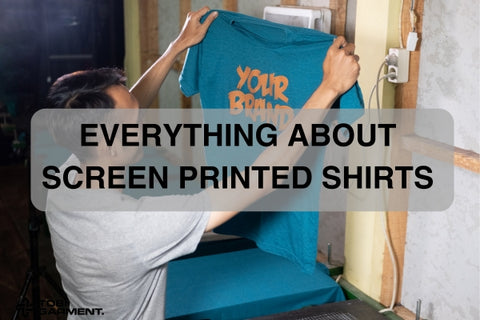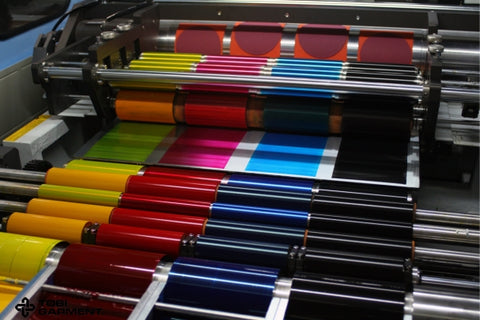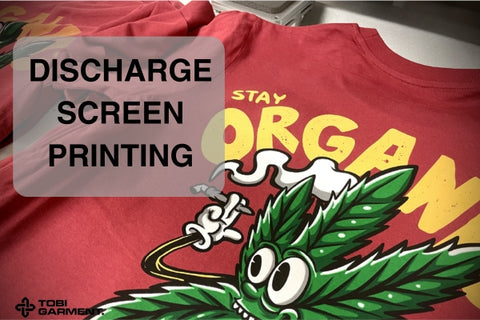
In this comprehensive guide, we'll delve into the world of screen printed shirts, exploring everything from the basics of the process to tips for designing your own custom piece.
Understanding Screen Printing
Screen printing is a printing method that involves transferring ink onto a surface through a mesh screen with a stencil. In the case of shirts, the stencil is placed on the fabric, and ink is forced through the mesh using a squeegee. This technique allows for precise control over the placement and color of the design.
How Screen Printing Works
The screen printing process typically involves the following steps:
- Design Creation: The first step is to create the desired design for your shirt. This can be done using computer software or by hand.
- Stencil Preparation: Once the design is finalized, a stencil is created. This is a thin sheet of material with holes corresponding to the areas where the ink will be applied.
- Ink Application: The stencil is placed on the shirt, and ink is poured onto the screen. A squeegee is then used to force the ink through the mesh and onto the fabric.
- Curing: The printed shirt is then cured to set the ink. This can be done using a heat press or oven.
Different Types of Screen Printing
There are several different types of screen printing techniques, each with its own advantages and disadvantages:
- Plastisol: This is the most common type of screen printing ink. It is durable, opaque, and can be used to create a wide range of colors.
- Water-based: Water-based inks are environmentally friendly and softer on the skin. However, they are not as durable as plastisol inks.
- Discharge: Discharge inks are used to remove color from a pre-dyed fabric. This creates a vintage-inspired look.
- Direct-to-garment (DTG): DTG printing uses inkjet technology to print directly onto the fabric. This allows for more intricate designs and is ideal for smaller quantities.
Read more: How to Print Custom Boxes: A Simple Guide
Screen Printing Equipment
To perform screen printing, you will need the following equipment:
- Screen: A mesh screen with a stencil attached.
- Squeegee: A rubber tool used to force ink through the screen.
- Exposure unit: A device used to expose the stencil to light, creating the design.
- Flash cure: A machine used to partially cure the ink before the final cure.
- Heat press: A machine used to cure the ink completely.
Choosing the Right Shirt for Screen Printing
The type of shirt you choose can have a significant impact on the quality and appearance of your screen-printed design. Here are some factors to consider:
Fabric Types and Their Benefits
- Cotton: A popular choice for screen printing due to its softness, breathability, and durability.
- Polyester: Offers a more wrinkle-resistant and quick-drying option.
- Blend: Blends of cotton and polyester combine the best qualities of both fabrics.
Shirt Styles and Designs
- T-shirts: The most common choice for screen printing.
- Hoodies: A versatile option for both casual and athletic wear.
- Tank tops: Ideal for warmer weather and athletic activities.
Garment Care and Durability
To ensure the longevity of your screen-printed shirt, follow these care instructions:
- Wash in cold water with like colors.
- Turn inside out before washing.
- Avoid using bleach or fabric softeners.
- Tumble dry on low heat or hang to dry
Read more: Start Screen Printing T-Shirts at Home: A Simple Guide
Designing Your Screen Printed Shirt
A well-designed shirt can make a statement and leave a lasting impression. Here are some tips for creating a unique and eye-catching design:
Creative Design Ideas
- Minimalist designs: Simple, clean designs can be very effective.
- Graphic elements: Incorporate illustrations, photos, or patterns.
- Typography: Experiment with different fonts and styles.
- Play on words: Use puns or clever slogans.
Color Combinations and lement each other.
- Choose colors that complement each other.
- Consider the overall aesthetic of the design.
- Select a font that is easy to read and matches the style of the design.
Incorporating Graphics and Logos
- Ensure that the graphics are high-quality and suitable for screen printing.
- Consider the size and placement of the graphics.
- Align the graphics with the overall design of the shirt.
Read more: Screen Printing vs Digital Printing for Custom T-Shirts
The Screen Printing Process
Now that you have a design in mind, it's time to bring it to life. Here's a breakdown of the screen printing process:
Preparing the Design for Printing
- Vectorize the design: Convert the design into a vector format (such as Adobe Illustrator) to ensure crisp lines and clean edges.
- Separate the colors: If the design contains multiple colors, separate them into individual layers.
Creating the Stencil
- Expose the stencil: Place the stencil on a photosensitive material and expose it to light. This will harden the material where the design is located.
- Wash out the unexposed areas: Wash away the unexposed material to create the stencil.
Applying Ink and Curing
- Apply the ink: Place the stencil on the shirt and apply the ink using a squeegee.
- Cure the ink: Use a heat press or oven to cure the ink and set it permanently.
Read more: Make a Print Shop Logo That Connects with Customers
Conclusion
Screen printing is a versatile and exciting technique that allows you to create unique and personalized apparel. By understanding the process, choosing the right shirt, and designing a creative design, you can create a piece that you'll be proud to wear.
FAQ
1. What is the difference between screen printing and embroidery?
Screen printing involves transferring ink onto a surface through a mesh screen, while embroidery involves stitching threads onto the fabric.
2. How long does screen printing take?
The time it takes to screen print a shirt depends on the complexity of the design and the quantity being produced. However, it typically takes a few days to a week.
3. Can I screen print my own shirts at home?
Yes, you can screen print your own shirts at home. However, it requires specialized equipment and some technical knowledge.
4. How much does screen printing cost?
The cost of screen printing depends on several factors, including the size of the design, the number of colors, and the quantity being produced.
Read more related posts from Tobi Garment:



